Bruce Dowbiggin
Connor, Johnny, Auston: You’ve Got To Have Hart
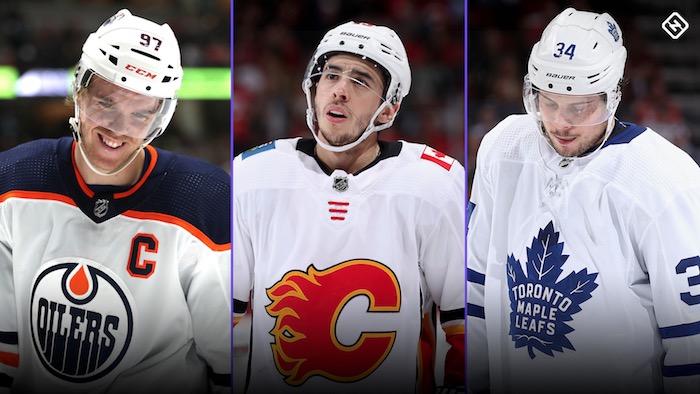
Among the slimmest volumes of the past 30 years is Great Canadian NHL Champions. As most suffering fans of the seven Canadian-based NHL teams know, no Canadian club has won a Stanley Cup since 1993.
Just five teams have even gotten to the Final: Vancouver (1994/ 2011), Calgary (2004), Ottawa (2006), Edmonton (2007) and Montreal (2021). They all lost. (You can make a point that the transplanted Quebec Nordiques won the Cup in Colorado in 1996 and 2001, but it’s a lame argument.)
As the 2022 postseason begins, however, there are two bonafide contenders— Toronto/ Calgary— to win the Cup and a third— Edmonton— with a puncher’s chance. Of course. these dreams can collapse for any number of reasons. In 2004 and 2011, the Flames and Canucks simply ran out of healthy bodies. As we wrote in an earlier column, goaltending can also trip up a team.
What’s just as interesting as the Canadian Cup chase will be the contest for the Hart Trophy as the most valuable player to his team. In the years since Patrick Roy led the Habs to the 1993 championship, going 10-0 in OT games, there has not been a year with a trio of Canadian-based players like this.
Toronto’s Auston Matthews. Edmonton’s Connor McDavid. Calgary’s Johnny Gaudreau.. (Ironically two of three are Americans on Canadian teams.) They’re key reasons why their teams have a chance at the Cup.
The Toronto media has— surprise— already anointed Maple Leafs captain Matthews as the putative winner. And Lord knows what the Toronto media decides instantly becomes gospel. Matthews has no doubt had a remarkable year, and deserves a lot of credit. Bookies love him too at an inflated -345.
Besides being the star of the team in the largest Canadian market, Matthews’ claim rests largely on being the top goal scorer in the NHL. His 58 goals in 71 games (all totals through 25/04) are just three more than his nearest competitor (Leon Draisaitl). He did manage a historic 51 of his goals in a 50-game span. But pure goal scoring is the only significant stat in which Matthews leads: his nine game-winning goals trail Draisaitl by two. And his 15 power-play goals trail Draisaitl by nine.
Matthews also trails McDavid, the NHL’s leading scorer, by 14 points, albeit with six fewer games played. Gaudreau leads him overall by 11 points. Gaudreau, meanwhile, currently sits third in league scoring behind McDavid and Florida’s Jonathan Huberdeau; he stakes his claim to the Hart based on some extraordinary plus/ minus statistics. With three games to play Gaudreau is a stunning plus-61; only his linemate Matthew Tkachuk is even remotely close at plus-55. McDavid is plus-27. Matthews an ordinary plus-18.
He not only scored but his line kept opponents from scoring. Okay, generic plus/ minus can be overrated. But there is real value in Gaudreau’s leading his challengers with 86 even-strength points. (This from a player Flames fans wanted traded a year ago). McDavid and Matthews are tied at 76.

While Matthews’ has 15 PPG, McDavid’s has 9 PPG followed by Gaudreau has a modest 6 PPG. Gaudreau has managed these numbers while playing less than his rivals. His ice time is just 18:28. Matthews logs 20:33. McDavid plays a whopping 22:08 per game.

McDavid may have been the best player in the NHL the past half-decade (he’s won two Harts already), but his team has held him back come playoff time. This year he and Draisaitl have grabbed the underachieving Oilers by the scruff and made a late surge to a playoff spot.
All three could end up watching Huberdeau, a Canadian playing on an American team, carry off the Hart— especially if Canadian voters split the vote. The Florida Panthers star is second in scoring and leads the league in assists and may be the best playmaker on the runaway Eastern Conference leaders.
Who to bet on? Matthews is the favourite at -345 to win his first Hart Trophy. At +400, two-time winner Connor McDavid is the second favourite. Gaudreau is closing the gap, now at +1600. Remember that voting is due before the playoffs, so a bad postseason cannot hurt a Hart contender nor can it help a dark horse. Our vote in a narrow contest goes to Gaudreau.
**************************************
The sad passing of Guy Lafleur this week brought forth many memories of his greatness as a player. But as we noted in Inexact Science (brucedowbigginbooks.com) The Flower was considered something of a bust in his first few NHL seasons. After scoring “just” 27 goals in his rookie year, he was overshadowed by No.2 selection Marcel Dionne and No. 5 pick Rick Martin.
(He) may have had one more tally and just seven fewer points than Dionne, but it was the perception that mattered also. And the perception was that Lafleur didn’t match up to his draft “adversary.” Making matters worse was that Buffalo’s number five overall pick, Rick Martin, achieved the heights Lafleur supposedly should have reached in 1971–72 by amassing an NHL rookie record 44 goals—still tied today as the seventh-highest such total in league history… Even though he was the odds-on favourite for Rookie of the Year when training camp had rolled around, Lafleur wasn’t even a finalist for the award. The dashing of these rather lofty expectations naturally begat skepticism of Lafleur’s greatness.
To the exasperation of Habs fans, Lafleur’s closest peers continued to outdo him in every way but in championship rings. Dionne avoided any sophomore jinx by posting 90 and 78 points in the next two campaigns, compared to Lafleur’s 56 and 55, while Martin reeled off 37- and 52-goal campaigns to show his freshman output had been no beginner’s luck. To add insult, even the number 10 pick of 1971, Steve Vickers—debuting for the Rangers in 1972—reeled off back-to-back 30-goal seasons to start off his career. When Lafleur bottomed out with only 21 goals in his third NHL season, 1973–74, there were whispers that maybe he was just a fluke, a flash-in-the-pan who peaked too early, spoiled by the weaker defences of the junior game and perhaps too mentally fragile to handle the immense pressure of being the next supposed legend in Canadiens lore.
The next year Lafleur ditched his tea-pot helmet and embarked on a brilliant career with three Art Ross scoring titles, three Hart Trophies, three Pearson Awards and one Conn Smythe—but he also shared in team success by winning five Stanley Cups and four Prince of Wales Trophies. Adieu, Guy
Bruce Dowbiggin @dowbboy is the editor of Not The Public Broadcaster (http://www.notthepublicbroadcaster.com). The best-selling author was nominated for the BBN Business Book award of 2020 for Personal Account with Tony Comper. A two-time winner of the Gemini Award as Canada’s top television sports broadcaster, he’s also a regular contributor to Sirius XM Canada Talks Ch. 167. His new book with his son Evan Inexact Science: The Six Most Compelling Draft Years In NHL History is now available on http://brucedowbigginbooks.ca/book-personalaccount.aspx
Bruce Dowbiggin
Bettman Gives Rogers Keys To The Empire. Nothing Will Change
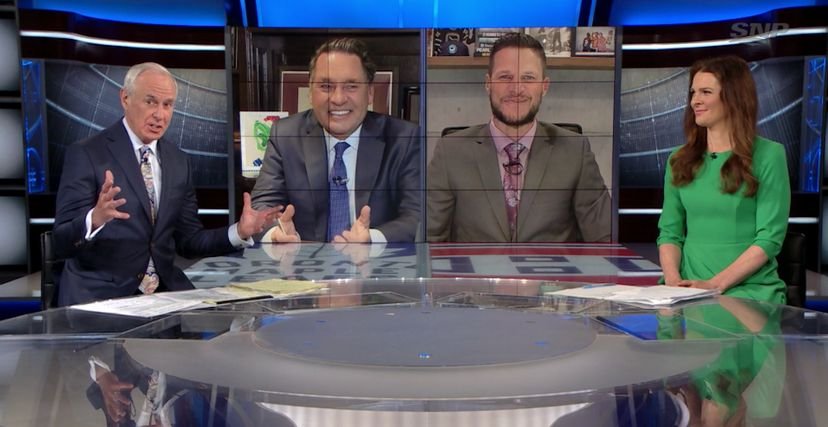
Good news if you like the way Rogers Sportsnet covers hockey in Canada. You’re about to get a whole lot more of it. In a move that sums up Gary Bettman’s unique broadcast philosophy the NHL has awarded the Canadian TV/ digital/ streaming rights to Rogers for the next 12 years. The price tag? 12 billion U.S. dollars (about $16.B CDN dollars).
While the pattern in modern sports broadcasting rights has been toward sharing the wealth among competing bidders— the NFL has six distinct partners— Bettman the contrarian has opted for a different notion. He’s all in with one Canadian partner, and let his critics STFU.
As opposed to the previous CDN national monopoly awarded to Rogers in 2013 this one bestows national rights in all languages across TV, streaming and digital for all regular-season and playoff games, plus the Stanley Cup Final and all special events. This extends to coverage in all regions. There are some concessions for Rogers to sell limited cutout packages, such as the Monday Night Amazon package they’ve created.
Presuming Pierre Poliievre doesn’t get his way with CBC, Rogers will likely piggyback on their time-sharing agreement for Saturday Hockey Night In Canada to get CBC’s network reach. (There remain many hockey fans who still think CBC has the NHL contract. Go figure.)
Translation: there will be no regional packages for TSN to produce Montreal Canadiens, Ottawa Senators or Toronto Maple Leafs games, for instance. But there will be regional blackouts, because nothing says we are proud of our product like denying it to a larger audience. Conn Smythe would be proud.
At the presser to announce the deal Rogers and Bettman were coy about how much they will charge consumers for the honour of being inundated by content in what now seems likely to be a 36-team league by the time the deal expires. Will costs be added to cable/ satellite packages? How much for streaming? With stories circulating that Rogers massively overbid for the package to get the monopoly it’s apparent that the phone company will be turning over every nickel to make it worthwhile.
Fans are apprehensive and over-saturated with hockey content already. For that reason, the NHL is now desperately looking for ways to lessen the tedium of the 82-game regular schedule with midseason content like the 4 Nations Cup or a World Cup format. In Canada’s hockey-mad environment Rogers will have a passionate market, but even the most fervent fans will only spend so much for their fix.
Already, Rogers is trumpeting its re-acquisition with commercials featuring Ron Maclean doing his breathy feels-like-home voice about how Sportsnet is the natural landing spot for hockey until many of us are dead. Bettman made cooing noises about Rogers’ commitment at the announcement.
But let us cast our minds back to 2013 when the last Rogers/ NHL deal was concocted. We were the sports media columnist at the Mop & Pail at the time and much was made that Rogers would be a technological marvel, re-inventing the way we watched hockey. There would be new camera angles, referee cams, heightened audio, refreshed editorial content etc.

As hockey fans now know Rogers dabbled in the brave new world briefly, blanched at the cost of being creative and largely went back to doing hockey the way it had always been done. Taking no risks. On some regional casts that meant as few as three or four cameras for the action.
But if you were expecting dashboard cameras and drone shots you were sadly disappointed. Similarly there was a brief stab at refreshing the pre-, mid- and postgame content. Hipster George Stromboulopoulos was brought in as a host to attract a larger female audience.
But pretty soon Strombo was gonzo, replaced by the anodyne David Amber (whose dad was once the leader of the journalist union at CBC). Women like former player Jennifer Botterill were brought in to change the gender balance on panels. They then acted pretty much like guys, chalk-talking viewers into numbness. Appointment viewing has become a fallback choice.
The move away for anything controversial came in 2019 with Rogers’ axing of Don Cherry’s Coach’s Corner in a flap over the former coach’s continuing ventures into political or cultural content. Maclean slipped the knife into his meal ticket and continued on the show. After time in limbo, doing location shoots, he was returned full-time to the desk.

As we wrote in June of 2022, the one exception to the standard “serious, sombre, even a touch grim” tone is former defenceman Kevin Bieksa. “Bieksa has been a moveable feast. His insouciance with media has become his ragging on the fellow panelists during intermissions that used to be as much fun as skating in July.” His banter with “insider” Elliotte Friedman is now a lone concession to wit on the show.
Intermissions are numbingly predictable, and Rogers’ stable of analysts and play-by-play announcers outside of HNIC is unchallenging to the orthodoxy of PxP being a radio call over TV pictures. Name one star beside Bieksa that has been produced by Rogers’ “safe” broadcast style since 2013. They’d fit in perfectly in a 1980s hockey broadcast. Now compare it with the lively Amazon broadcasts hosted by Adnan Virk and Andi Petrillo.
This leaves a lingering question. What happens to TSN? Many prefer the editorial and studio profile of TSN on Trade Deadline Day or Free Agent frenzy. TSN locked up its stars such as James Duthie and Bob McKenzie when the last deal was signed. But there isn’t enough live content this time to support keeping a full roster anymore. Who will stay and who will go? (TSN’s president Stewart Johnson is the new commissioner of the CFL).
And with Rogers taking full control of MLSE (Maple Leafs, Raptors, Argos, Toronto FC) TSN is left with the CFL and packages of NFL, golf, tennis, some auto racing and international soccer. Is that enough on which to float a network? There have been rumours that Bell, owner of TSN, is interested in divesting itself of the high cost of sports broadcasting. Should that happen— who has the money to replace them?— the effect will be seismic in Canadian broadcasting.
For now, watch how much pressure the NHL puts on Rogers to up its game. More importantly what will happen when Bettman finally retires and the league has a new vision since 1992? Rogers has sewn up its end. Will the audience go with them?
Bruce Dowbiggin @dowbboy is the editor of Not The Public Broadcaster A two-time winner of the Gemini Award as Canada’s top television sports broadcaster, his new book Deal With It: The Trades That Stunned The NHL And Changed hockey is now available on Amazon. Inexact Science: The Six Most Compelling Draft Years In NHL History, his previous book with his son Evan, was voted the seventh-best professional hockey book of all time by bookauthority.org . His 2004 book Money Players was voted sixth best on the same list, and is available via brucedowbigginbooks.ca.
Bruce Dowbiggin
Are the Jays Signing Or Declining? Only Vladdy & Bo Know For Sure

We were watching the Los Angeles Dodgers home opener on Thursday. The defending World Series champs came from behind to beat Detroit 5-4. The big hit was a three-run homer from a player named Teoscar Hernandez off AL Cy Young winner Tarik Skubal

If that name sounds familiar, Teoscar was a Toronto Blue Jay from 2018-2022. He pounded 121 homers in the span as part of the Jays’ order. But when Toronto decided it needed bullpen help he was traded to Seattle in 2022 for pitchers Erik Swanson and Adam Macko. While Swanson has battled injuries and Macko is no-go, Hernandez keeps pounding the ball.
In his one year in Seattle he had strikeout problems but did hit 26 homers with 93 RBIs. In the winter of 2023-24 he signed as a free agent with the aforementioned Dodgers. Batting behind Shohei Ohtani he launched 33 homers and 99 RBIs. He won the All Star Home Run Derby. His key hit in Game 5 of the World Series propelled L.A. to the title. The stacked Dodgers liked him enough to give him a three-year, $66 million contract.
Why are we telling you this? Because the Blue Jays also started their 2025 season at home, matched against the Baltimore Orioles. And while there are reasons to believe the Jays will not replicate their 74-win disaster of 2024, there remain the old bugaboos of injuries and pitching. In the four games against the division rivals they need to beat, Jays’ pitching gave up 24 runs while scoring 18—nine of them in one game.
The splashy acquisition of 40 year old HOF pitcher Max Scherzer has already gone sideways as a bad thumb has put him on the IL. The new stopper, Jeff Hoffman, was rejected on medical grounds by two other teams before Toronto’s money made him healthy. The rest of the bullpen— a disaster in 2024— got off to a rocky start with Orioles hitters playing BP against them. They’ve already DFA’d one pitcher and called up two more from the minors. The re-made pen performed well in Game 4, but how it holds up in their next 158 games is a mystery.
On offence, while their rivals in Boston and New York added sexy pieces to their rosters the Jays were only able to acquire veteran switch-hitting Baltimore slugger Anthony Santander. More typical of their other signees is ex-Cleveland 2B infielder Andres Giminez who in 2023 had the lowest average exit velocity of all AL batters (84.8 mph), and led the AL in percentage of balls that were softly hit (21.7%). He does play a slick second base.
The winter story line for the Jays offence was what to do about Vladimir Guerrero Jr. and Bo Bichette, the erstwhile star-dust twins who were— along with Cavan Biggio— supposed to guarantee titles when they emerged in 2019. Biggio is gone, so the other two carry the credibility of the management team of Mark Shapiro and Ross Atkins. From the outside the Jays seem paralyzed to act.

While the Jays dithered, the price for players like Guerrero and Bichette soared. Using Juan Soto’s Mets $765 M deal as a yardstick Guerrero turned down a Jays offer of just under $600 M, saying he was done talking during the season. If Shapiro/ Atkins had anticipated the market Guerrero would have cost a lot less in 2023-24. If there is no progress by the trading deadline the Jays will be forced to get what they can in a trade.
Shortstop Bichette— a gifted player who battled injuries in 2024—is likewise up for a new deal. He has started strong in 2025 and would command a handsome return in a trade. He says the Jays are waiting to see what happens with Guerrero first. Having sold the pair for years to their loyal fans, having to trade them will be a massive PR blow. And while Jays’ national audience can be an advantage, having a whole country pissed with you is devastating.
The rest of the secret sauce for a Toronto comeback revolves around one of their hitting prospects taking a step forward. Any/ all of Will Wagner, Alan Roden, Addison Barger or Leo Jimenez can have a job if they show their bats are for real. Otherwise Shapiro and Atkins will hope that Dalton Varsho, George Springer and Alejandro Kirk can find a little magic in their aging bats.
A failure to retain talent may prompt fans to recall that Rogers decided that Shapiro and Atkins, who dumped Teoscar, were worthy replacements for the previous GM who’d walked away. The man Schneider and Atkins were hired to improve upon— Canadian Alex Anthopoulos— has made the Atlanta Braves a dominant team. Since AA moved to Atlanta they’ve won 90, 97, 38 (Covid year), 88, 101, 104, 109, 89 games. They’ve won a World Series and two other playoff series. They won six straight NL East titles before injuries sank them last year.
The Braves have developed young everyday superstars like Ronald Acuńa Jr. who don’t get picked off second base. They have built a pitching staff largely from within, not splashy FA signings. They have swagger without cockiness. They are set for years to come.
The Blue Jays? Since AA left they’ve won 73, 67, 32 (Covid), 91, 92, 89, 74 games. They’ve won zero postseason games while missing the playoffs in four seasons. The players they traded are starring for other teams in the postseason. They are again employing an inexperienced company guy as manager.
While it’s true that the sun can’t shine on the same team every day, Jays fans believe it would be nice if the great orb would find their club as it did back in the 1992/93 World Series days. Instead of the reflected glory of past stars winning for other teams. Patience is thin. And time is ticking.
Bruce Dowbiggin @dowbboy is the editor of Not The Public Broadcaster A two-time winner of the Gemini Award as Canada’s top television sports broadcaster, his new book Deal With It: The Trades That Stunned The NHL And Changed hockey is now available on Amazon. Inexact Science: The Six Most Compelling Draft Years In NHL History, his previous book with his son Evan, was voted the seventh-best professional hockey book of all time by bookauthority.org . His 2004 book Money Players was voted sixth best on the same list, and is available via brucedowbigginbooks.ca.
-
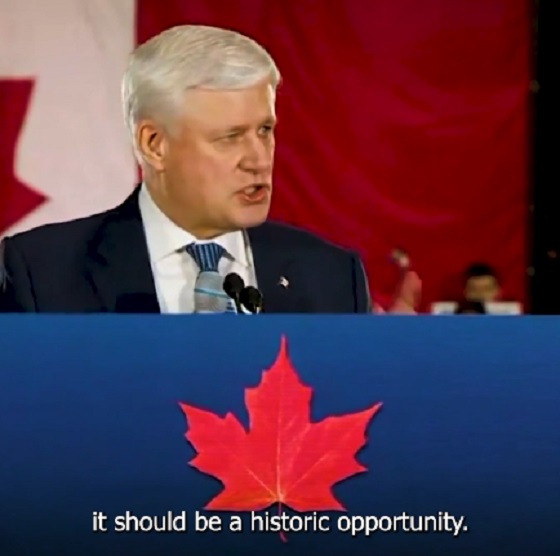
 2025 Federal Election1 day ago
2025 Federal Election1 day agoHarper Endorses Poilievre at Historic Edmonton Rally: “This Crisis Was Made in Canada”
-
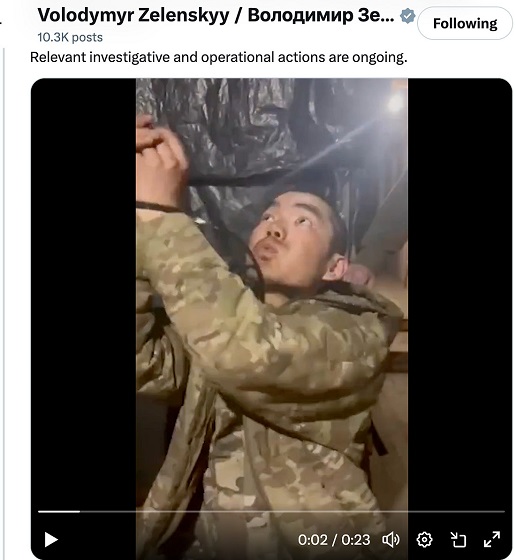
 conflict1 day ago
conflict1 day agoZelensky Alleges Chinese Nationals Fighting for Russia, Calls for Global Response
-
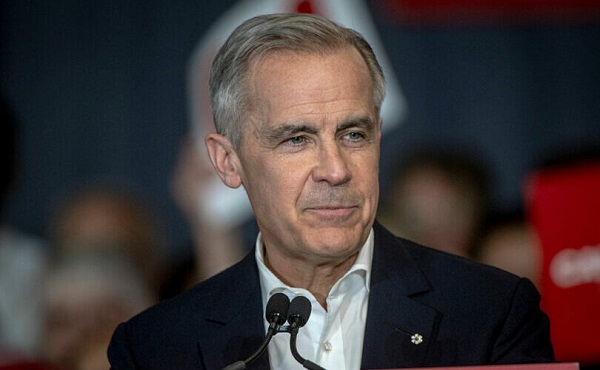
 2025 Federal Election1 day ago
2025 Federal Election1 day agoMark Carney’s radical left-wing, globalist record proves he is Justin Trudeau 2.0
-
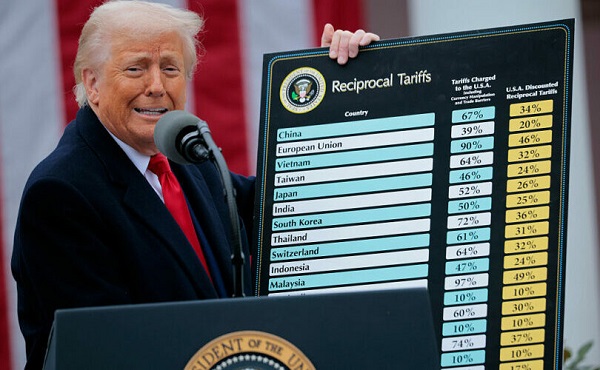
 Business1 day ago
Business1 day agoTrump’s tariff plan replaces free trade with balanced trade. Globalists hate that.
-
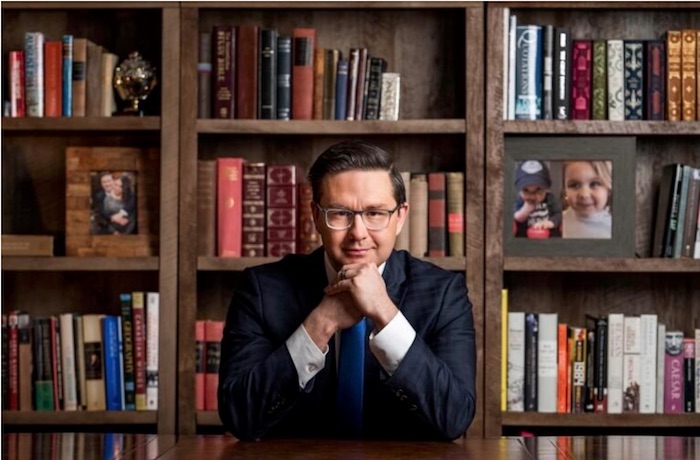
 2025 Federal Election1 day ago
2025 Federal Election1 day agoAn In-Depth Campaign Trail “Interview” With Pierre Poilievre
-
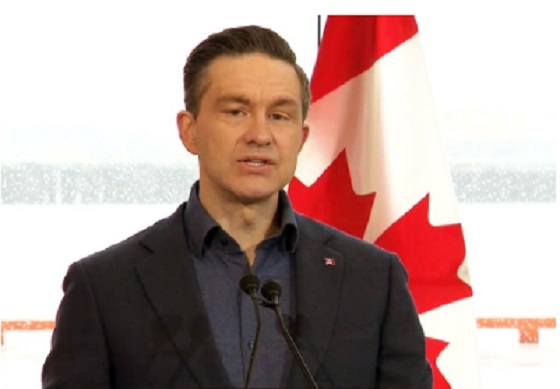
 2025 Federal Election2 days ago
2025 Federal Election2 days agoPoilievre Will Bring in ‘One and Done’ Resource Approvals, and Ten Specific Projects Including LNG Canada Phase II
-

 Bruce Dowbiggin2 days ago
Bruce Dowbiggin2 days agoBettman Gives Rogers Keys To The Empire. Nothing Will Change
-
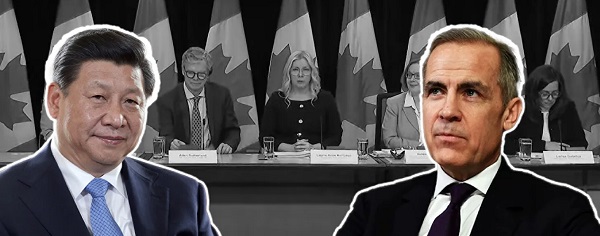
 2025 Federal Election2 days ago
2025 Federal Election2 days agoElection Security Briefing Confirms CCP-Linked Operation Boosted Carney




